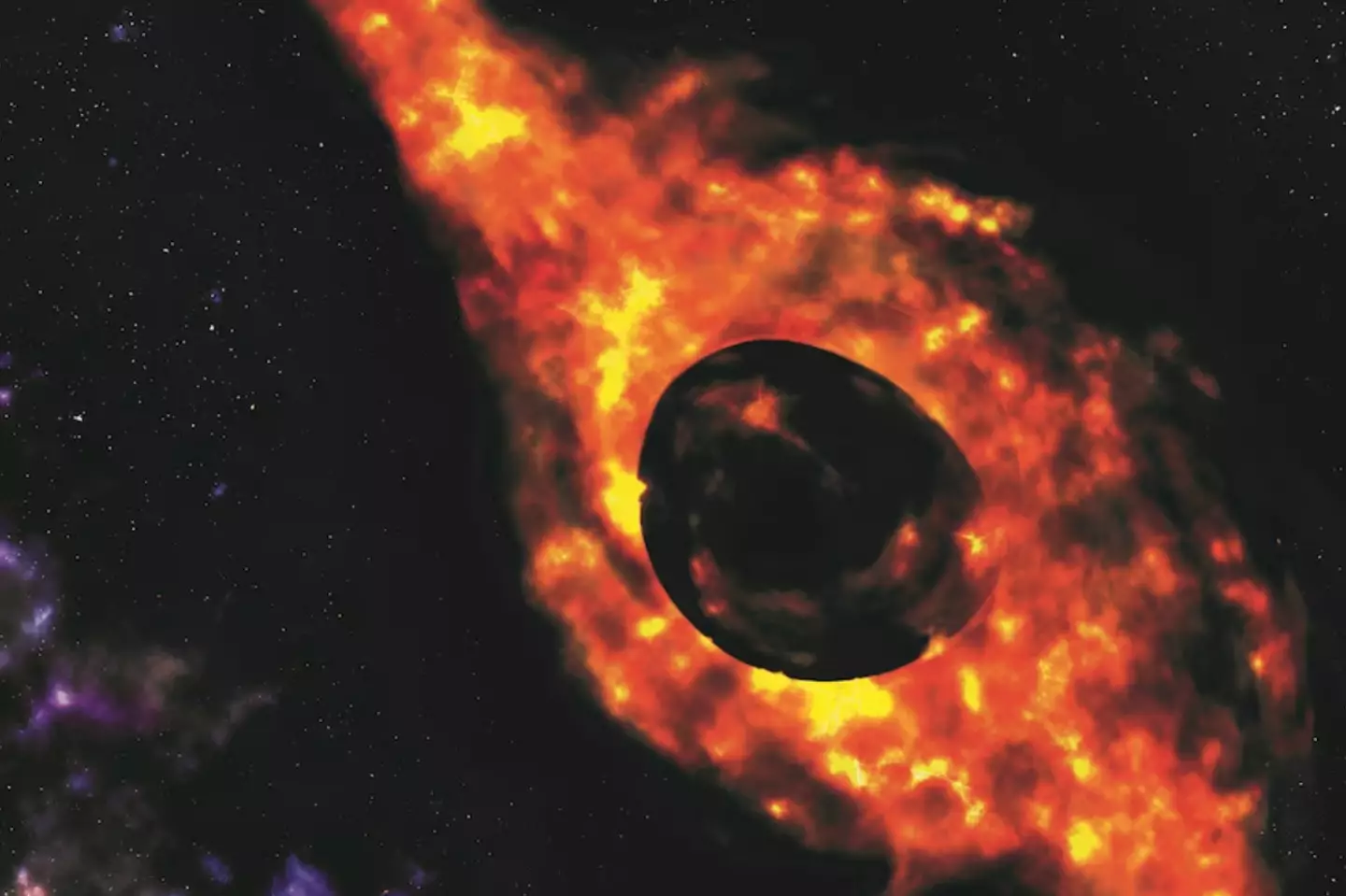We’ve all heard of black holes, and we’ve probably had our fair share of nightmares that we’re suddenly going to be sucked into one.
I mean, cast your mind back to 2012 when the high school group chats were filled with panic that the world was going to end – with scientists looking at creating a black hole adding to our teen fears.
Obviously, we didn’t all end up inside a black hole, but now scientists have discovered the fastest-growing black hole ever recorded.
Now visible from Earth, researchers at Australian National University (ANU) have found the supermassive black hole to have a mass roughly 17 billion times that of our solar system’s Sun.
Advert
Let’s just clarify what a black hole actually is, other than it being something a load of us grew up thinking it was more than possible we’d be sucked into.
According to NASA, it’s a ‘great amount of matter packed into a very small area’ with a gravitational field so strong that ‘nothing, not even light, can escape’.
This newly discovered black hole exists in a quasar, which is essentially a storm of bright light where gas and dust falling into a supermassive whopper like this one unleashes such brightness it can outshine collective lights of stars.

And adding to the mega nature of this black hole, researchers found the quasar is the most luminous known thing being continuously powered in the universe.
Advert
Although it’s so bright, the quasar cannot be seen by the naked eye but you can see it from Earth with ‘a backyard telescope’.
The black hole is said to be increasing by the equivalent of one sun every day.
Christian Wolf, lead author on the research project and ANU associate professor explained to ABC: “This black hole eats as much mass in a single day as there is in our entire solar system – the Sun and all the planets combined.”

He added that it ‘wasn’t easy’ to find and the team turned to one of the world’s largest telescopes to measure the black hole’s mega mass.
Advert
ANU astrophysicist and former vice-chancellor Brian Schmidt said: “I think the reason this is mind blowing is just the fact that the thing exists at all. It is not something I would've thought would have been in the universe, it just seems too big and too active.”
While it might almost be too hard for him to even believe, Schmidt said it’ll be useful in figuring out what’s going on with black holes ‘because there are a lot of mysteries about why there are so many — and so many that are big — in the universe’.
.png)